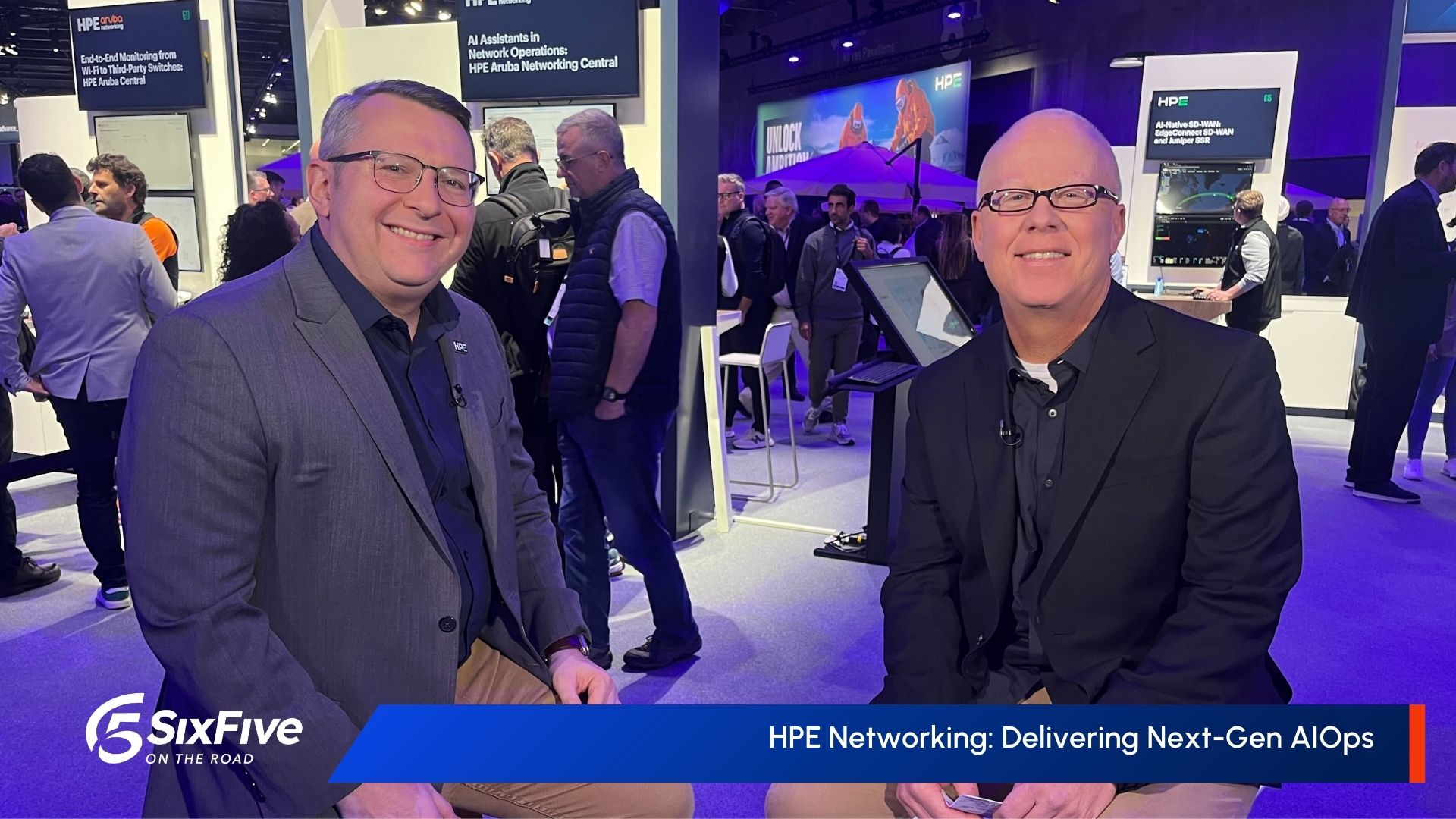Broadcom CEO Hock Tan from VMware Explore 2025 Live Recap
Broadcom President & CEO Hock Tan joins Daniel Newman live at VMware Explore 2025 to discuss the impact of VMware Cloud Foundation 9.0 on unifying IT and development teams and overcoming cloud infrastructure friction.
How is VMware’s Cloud Foundation 9.0 changing enterprise cloud strategy and addressing the core challenges facing today's IT and development teams?
At VMware Explore 2025, host Daniel Newman, CEO and Chief Analyst at The Futurum Group, is joined by Broadcom's Hock Tan, President and CEO, for a conversation on the highlights from his general session keynote. This session focuses on how VMware Cloud Foundation 9.0 is influencing enterprises both large and small, and how it is unifying IT practitioners and developers by addressing and eliminating the “three points of friction.”
The key takeaways from the discussion point to three specific areas of focus for the platform.
- Unifying Teams: The platform is designed to bridge the operational gap between different IT functions—specifically between IT practitioners and developers. The goal is to create a shared ecosystem that can streamline application development and deployment across the enterprise.
- Security and Speed: VCF 9.0 aims to solve the challenge of balancing a rapid pace of innovation with necessary security controls. By integrating security capabilities directly into the platform, it seeks to provide a model where faster application delivery does not come at the expense of security.
- Modernization and Hybrid Cloud: A central component of the strategy is enabling organizations to modernize their legacy systems. The platform's hybrid cloud model is presented as a way to leverage the benefits of both private and public cloud environments, allowing enterprises to enhance their competitive position without requiring a full migration.
In essence, the platform is being framed as a unified solution that addresses the operational and strategic challenges of balancing speed, security, and modernization within the enterprise.
Watch the full video at sixfivemedia.com, and be sure to subscribe to our YouTube channel, so you never miss an episode.
Or listen to the audio here:
Disclaimer: Six Five on The Road is for information and entertainment purposes only. Over the course of this webcast, we may talk about companies that are publicly traded, and we may even reference that fact and their equity share price, but please do not take anything that we say as a recommendation about what you should do with your investment dollars. We are not investment advisors, and we ask that you do not treat us as such.
Daniel Newman: Hey, everyone. The Six Five is On The Road here in Las Vegas, Nevada for VMware Explorer 2025. Just finished up the general session. We were actually sitting here on the main stage because we have the keynote speaker here with me today, President and CEO Hock Tan of Broadcom joining me to talk about the session, talk about the event. Hock, welcome Back to the Six Five.
Hock Tan: Glad to be here.
Daniel Newman: Dan, it's so great to have you back. You know, we sat here, you and me and Pat. Yeah, I think it was right after the first keynote, right after you made the acquisition.
Hock Tan: Right.
Daniel Newman: All that came together, a lot of events that took place, and you got on stage, you gave the keynote, and I still remember when you got us started, you know, you really kind of made this strong case that private cloud, that enterprises needed to stay on prem. A year later, you doubled down. Congratulations and, you know, welcome back to Vegas here.
Hock Tan: Thank you. Thank you very much, Dan. Glad to be here.
Daniel Newman: So let's just talk about the general session. I mean, first of all, a lot of progress has been made on VCF9. You know, you showed a ton of additional features. We'll actually talk to Paul Turner later, who is also on the stage.
Hock Tan: Right.
Daniel Newman: We'll dig into the meat. But with you, I just kind of want to get your Overall, the big main message that you were really hoping that everyone came away with after seeing this morning's keynote.
Hock Tan: Well, I think you're right to describe it as we double down and. But that was what we had promised the audience. That in fact, the. This is exactly what, when we had a discussion two years ago, the primary reason why we acquired VMware, we see that they have the technology, they just have not put together the platform. With VCF 9.0, we actually put together from the ground up a complete platform. See, last year was still a journey when we took the various components we inherited from VMware, improved its better interoperability, and stitched it together, and that was VCF 5.2. Today we moved to VCF 9.0, which while we were pushing VCF 5.2 as a private cloud platform, what we wanted to do ultimately is created from ground up this 9.0, which is available today. So, no, it's very exciting times and we prove this is something we could do and we got it done.
Daniel Newman: Well, there's a lot to be done though too, because so many of the customers and you and I have had several conversations over the last year still sticking closely to VMware, even as you've really sort of reiterated how important it is that everyone moves to platform, that the future is not in any one component. It's not just the networking, it's not just security, it's not just virtualization. It's really about the platform. This gives your customers the ability to bring the workloads on prem which you saw nine out of 10 of the largest Fortune 500 companies are all working with you. The economics are really good when you bring it as a platform, you get better value out of all of it by integrating it all. But I mean I'd like to hear from you. You know, there's some big advantages that you see besides maths and economics, which I keep saying. What do you see as those big advantages that you're creating for those customers, those nine out of 10 and more that are sticking with you?
Hock Tan: Actually what we're creating is very simply where the direction of the IT infrastructure technology roadmap is heading. It was 25 years ago VMware came in with this great technology which is compute virtualization and created through creating a hypervisor to virtualize the CPUs compute. And that was great because it was done to literally increase utilization the way applications run on CPUs increase utilization of the CPU. But over the last 20, 25 years, especially the public cloud showed it. This whole thing about improving utilization has extended beyond that to say that if you can virtualize compute, you might as well virtualize the rest of the hardware components in a data center and create this abstraction layer software which in effect applications run on any kind of hardware sitting in a data center. And that's the roadmap that has progressed over the last 20 years. And so it's a necessary thing to do. The issue is that many of the customers of VMware and anybody else on premises when they run their data centers have not changed from 20 years ago. And what we're saying is guys, it's time to modernize. And the cloud, the public cloud guys just showed the way so loud and clear that they could run it more efficiently. Much better. At least from the perspective of developers trying to deploy new apps is to virtualize your entire data center and create a software defined data center. What you call a platform is the path towards moving what data centers need to become to run high velocity modern apps. As in that's all we're fulfilling. We're fulfilling what is the right roadmap and things are going along.
Daniel Newman: But the inflection Hock of AI has actually accelerated this. If companies are going to get serious about building and deploying AI powered applications. Last year you did private AI, this year you came back and you've expanded and continued on offerings. You partnered with Nvidia, you partnered with Intel and Gotti 3. You announced AMD today. But not just the actual running on these GPUs but also all the services, the microservices that have to run around this. I mean, isn't this another really important advantage, inflection and reason that customers move to platform if they want to get serious about AI?
Hock Tan: It is. It's a great tailwind for customers to think hard about adopting VCF as a platform, as a platform for them to keep running, to modernize the data centers for no other reason than simply the fact that a GPU is just another compute engine from a CPU. And our VCF hypervisor abstraction platform runs both. So as workloads in enterprises progress to running AI workloads in addition to traditional x86 workloads, it's a natural platform that you pick one VCF and with AI Cloud foundation we deploy, we actually can create scheduler that allows workloads to know where to go to run most optimally whether it's CPUs or GPUs, all on the same platform within the same data center. So it's a perfect tailwind towards customers tending to look towards it and saying yeah, let's adopt VCF 9.0 because we're the only ones that are available on prem today. That does it.
Daniel Newman: Yeah. Well the customers are saying out loud that they want to bring workloads back. There's a number of different reasons. Of course, a lot of the administrators that run these are very familiar with the VCF platform and again, how quickly everyone has to learn how to succeed with AI. This transition. The fact that you've made it a platform and you've kind of said like look, scale up, scale out. No matter what type of compute you're using, what kind of applications you're building, do it all here. That's really important right now because the pressure that these IT leaders are under right now to get these out, get apps, develop fast, add AI, add the capabilities and by the way, do it without overly spending on all of this. It seems that you've sort of broken down some of those challenges. I want to ask you because you mentioned three friction points. One of your big highlights in the keynote were three big points of friction that the enterprises have with adoption and moving forward. What are those? Share a little of those with the audience.
Hock Tan: Well, it's a great Question and let's put it in perspective, which I highlighted out there because the first part of my keynote was, hey, we got this fully integrated, tightly knit platform combining compute, networking and storage altogether. So great. You create yourself a software defined data center, you have the technology. It's about saying, we got the technology working, it's done, it's available, and it shouldn't be a surprise. We broadcast VMware investing the amount we did over the past two years from a base technology that VMware brought on board. We got it all figured out so the technology works. But now comes the real practical issue. Deploying new ideas. Even as powerful and compelling as VCF has challenges. And the challenges are more organizational and human. It really is. And those are three friction points. One is developers. Developers like to run their own things, do their own obstacles. And nowadays they like modern apps, they like open source and they run containers. And that's one big friction. How do you deal with developers if you are IT infrastructure now? In the old days, VMware was seen as only supporting virtual machines, While with VCF 9.0 there's no reason it not only runs virtual machines, it runs containers, modern containers, just as seamlessly as it runs virtual machines. In other words, it's one single platform now that can run both modern workloads and the legacy virtual machine workloads all in one. So that basically enables developers to think about, hey, I can get a path to production of my apps just as fast with VMware as if I have to run off the public cloud.
Daniel Newman: So to be really simple though, it puts it and developers where they're working more harmoniously, they work together, it's not so much working.
Hock Tan: I will put it even more. It enables it now to go to the developers and say, I can run your apps at the speed, at a velocity you want it to run. That's even one step further. We enable it to step up to what developers truly want. Because in the past, developers had to write a ticket for 25 days.
Daniel Newman: Yeah, they have their own little sandbox. They do things over there and then.
Hock Tan: Now they can get in minutes.
Daniel Newman: Hope that it could give them production when they need to take work. Now they can sandbox, take it to production seamlessly with it. No more friction there. Also, you talk big about speed and security because that's another big friction point. Of course, AI is only creating exponentially more risk too. So no compromise on speed or speed and security.
Hock Tan: Well, it's VCF, the VMI Cloud foundation, especially 9.0 features and capability building. But just creating a software defined data center, a full software common stack abstraction across the entire different hardware is the perfect place to secure your workloads, to secure computing, to secure your workloads in it. Because you can easily build it again in the software platform micro segmentation, you can create eastware security, you can build in all kinds of threat hunting all kinds of tools without having to put in additional agents from third party tools coming in. It's all built in. The protection, the security is almost built in innate within that platform because it's all software. So that's a natural platform that creates a hell of a lot more security than they'll say you can get from a public cloud.
Daniel Newman: Yeah, and just to double click too, because you sort of talked about this a little bit when you talked about it and developers, but you also have to really reiterate that part of the reason you've had this long tail customers have stuck with you even as you sort of push them to go faster to VCF, they're still using virtualization services is because legacy it has not changed as fast as what you maybe and me are often talking about. In terms of the leading edge and with the public cloud, you seem to give a path, right? I mean one of the big friction points that you're solving is you're giving a path to these companies to more quickly get to modern architectures without having to completely blow up everything that they've done in the past.
Hock Tan: And while we are, and because while we create this ability through VCF for them to progress up the roadmap to virtualizing their entire data center, you're right, not every company wants to do it or is ready to do it. They want to do it because there's value in them doing it. Whether they are able to get there organizationally skill wise is a different matter. So what we also have is that software stack we have can still give them what they want, which is virtualize different components, virtualize compute in particular, but get that productivity improvements from virtualizing the CPUs but not be able to get the entire benefit of from virtualizing the rest of the data center. Because they still need to have storage, they still need to have networking, but if they're not able skill wise or ready to deploy it, we give them the choice and we still offer them the products and the support through a very strong ecosystem of channel resellers and even cloud service providers.
Daniel Newman: So let's wrap this up here and talk a little bit about the audience you had here today. This was a passionate crowd. Try to get up here to the stage to chat to you. And I had to wrestle through because the place was pretty packed. And, you know, there's some cheering. There was quite a bit of cheering, which again, you know, I think the enthusiasm, the excitement, this group, the all very much here. So in this moment, a chance to kind of give them that big message. And by the way, all the people that couldn't be here, that big message that you really want them to take away from Explore 2025.
Hock Tan: Well, that private Cloud is back, is here and their workloads are coming back from Public cloud into Private Cloud on prem. And we have the platform, we have the technology to make it work very well and do it right this time. That is the key message, that this is a real alternative for enterprises and the practitioners that go with it to actually bring workloads back as an alternative to Public Cloud. To me, that's the key thing we have said all along and we have reached a key milestone.
Daniel Newman: Yeah. And if I can just add an analyst cue here at the very end, Tuhak, is that you really are offering without sacrifice the ability for a company to do all the things that they think they can only do in the public cloud with VMware. And that's what I think is a really strong message, you don't have to compromise, you don't have to sacrifice. You can have all the value and by the way, the benefits of economics, the control, the things that a lot of these IT leaders really care about, and you're making that possible. So I want to congratulate you on the success. I want to thank you so much for taking a little time to sit down with me here and look forward to doing it again soon.
Hock Tan: Well, thank you and thank you for. Thank you for sticking with us as we go through this journey.
Daniel Newman: Yeah, absolutely.
Hock Tan: It's really exciting times.
Daniel Newman: Yeah. Watching closely not just what you're doing here, but across the entire Broadcom company. Great year. It's been great to watch success both in the market and products and products and the customers, this exact success you're having. So more to come.
Hock Tan: Thank you, Dan, good to see you again.
Daniel Newman: Good to see you and thanks. And good to see you as well. We appreciate all of you being here with the Six Five. We are on the road at VMware Explore 2025 in Las Vegas, Nevada. That was a great conversation with President and CEO Hock Tan. We'll be sure to get back with him again soon to hear more about what he's doing with VMware across the software portfolio and of course, its semiconductor business. But for this episode, for the Six Five, I gotta say goodbye. See you all later.
MORE VIDEOS
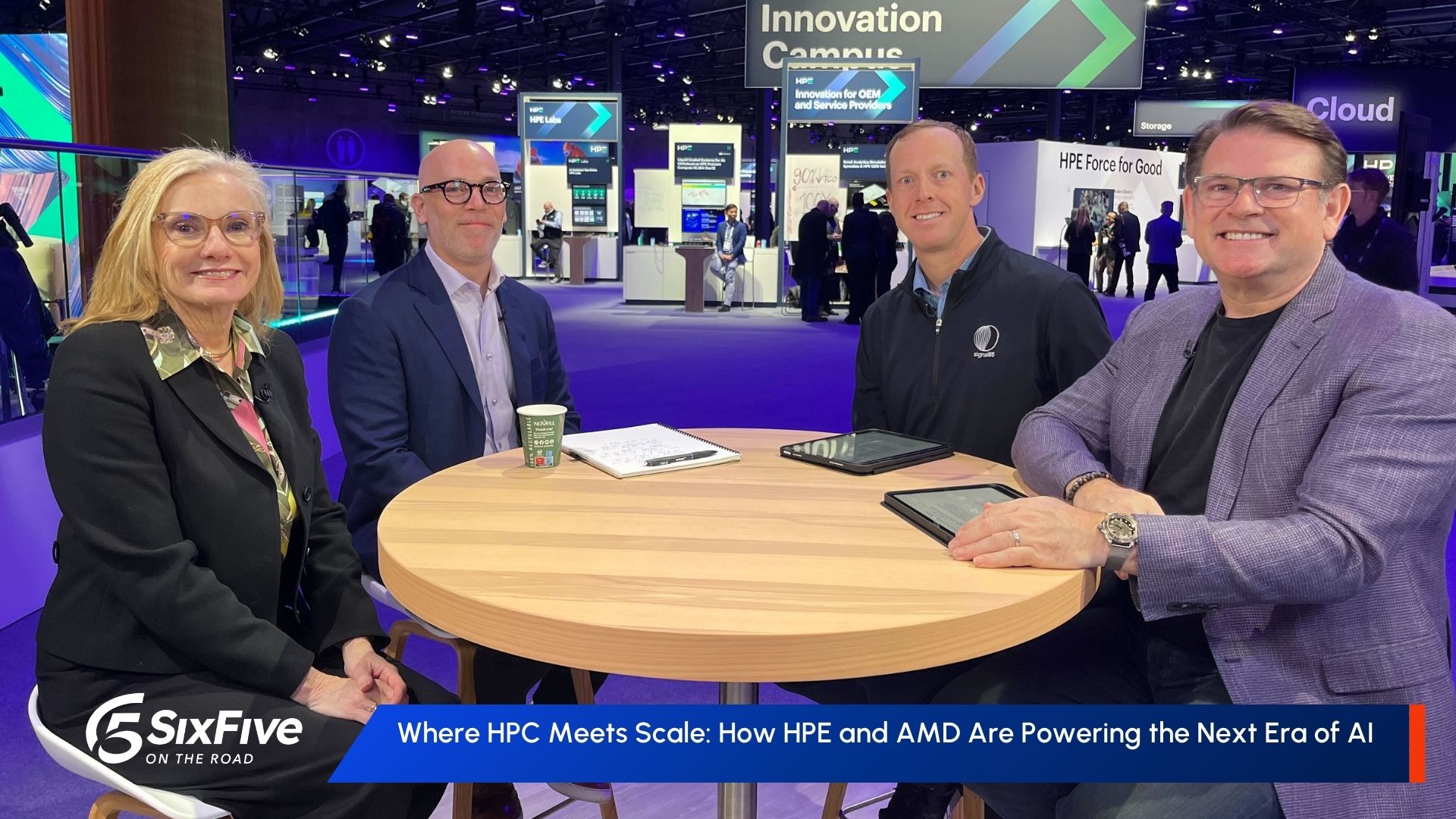
Where HPC Meets Scale: How HPE and AMD Are Powering the Next Era of AI – Six Five On The Road
Trish Damkroger of HPE and Safy Fishov of AMD join David Nicholson and Ryan Shrout to share insights into how the HPE–AMD partnership is driving HPC-class AI innovation via new platforms, sovereign AI initiatives, and rapid time-to-value for organizations.
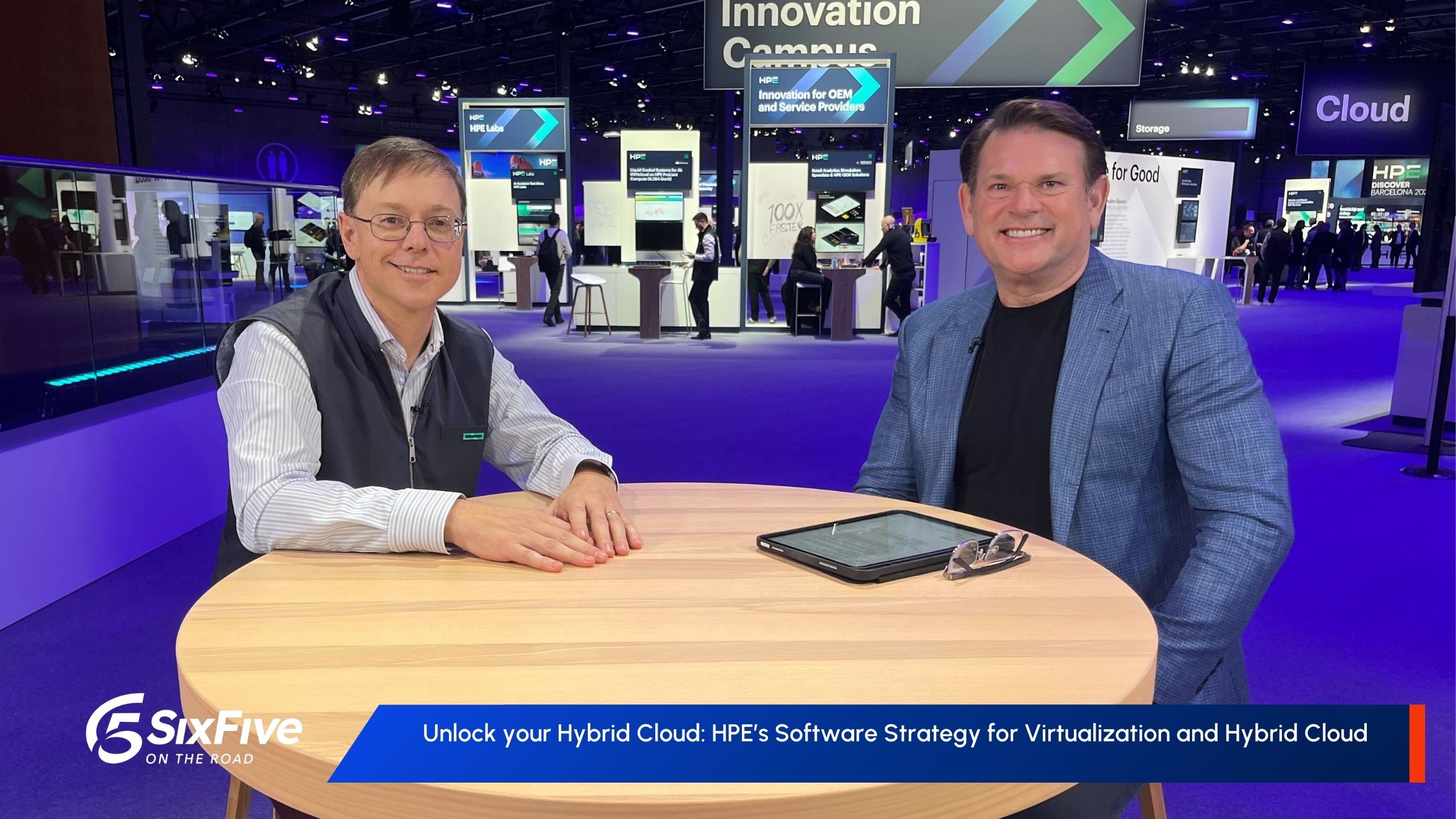
Unlock your Hybrid Cloud: HPE’s Software Strategy for Virtualization and Hybrid Cloud – Six Five In The Booth
Brad Parks, Chief Product / GTM Officer at HPE, joins David Nicholson to discuss HPE’s unified virtualization and hybrid cloud software strategy, Morpheus and CloudOps updates, and what’s next for VM Essentials and future integrations.
Other Categories
CYBERSECURITY
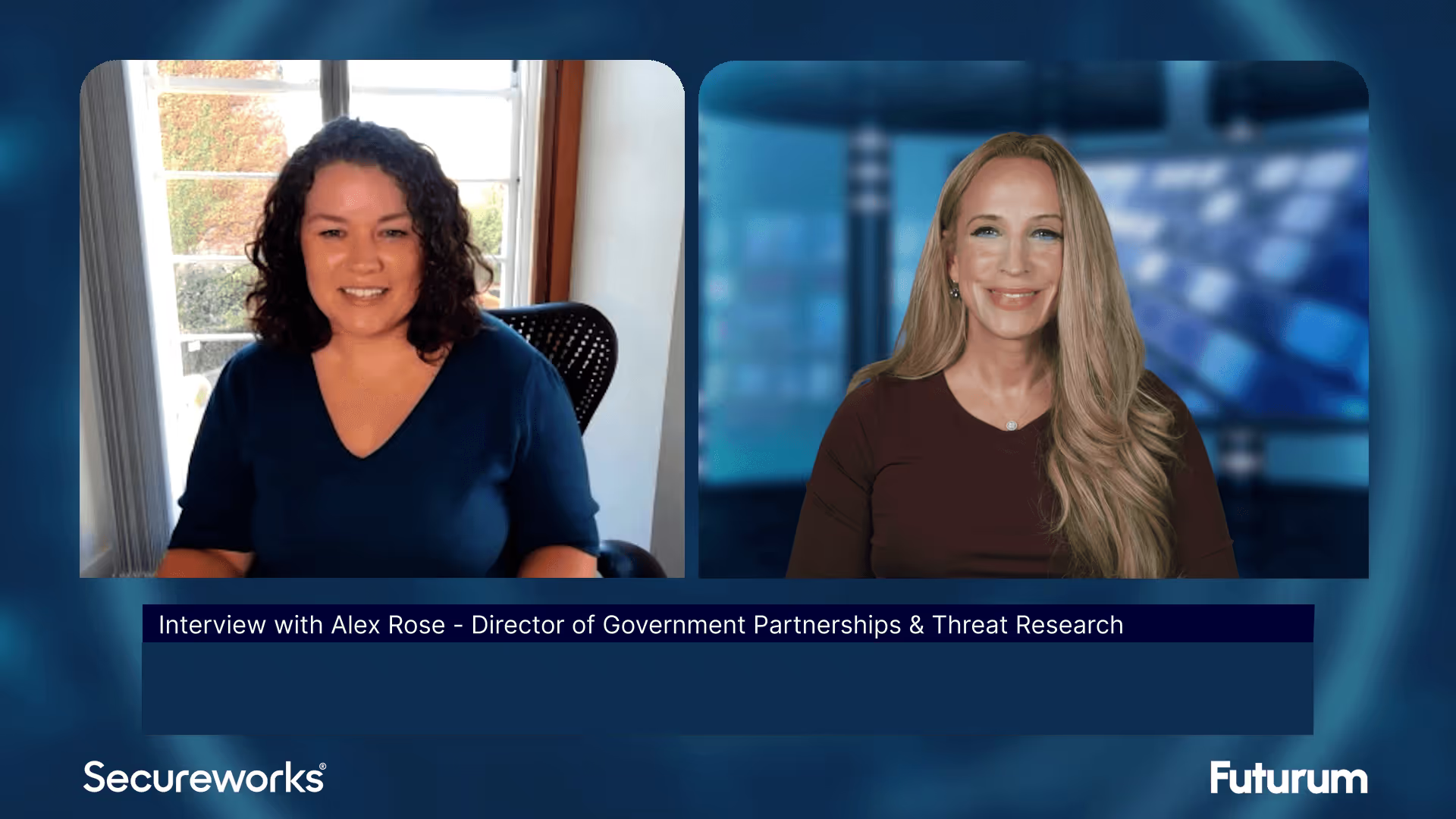
Threat Intelligence: Insights on Cybersecurity from Secureworks
Alex Rose from Secureworks joins Shira Rubinoff on the Cybersphere to share his insights on the critical role of threat intelligence in modern cybersecurity efforts, underscoring the importance of proactive, intelligence-driven defense mechanisms.
QUANTUM
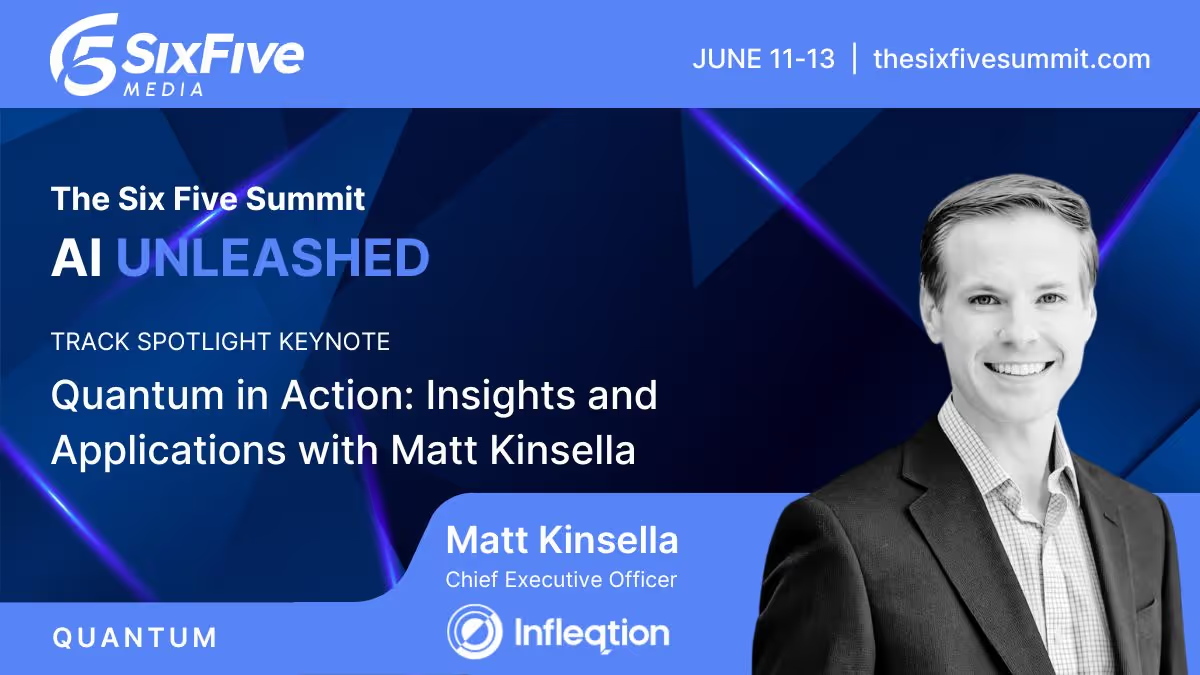
Quantum in Action: Insights and Applications with Matt Kinsella
Quantum is no longer a technology of the future; the quantum opportunity is here now. During this keynote conversation, Infleqtion CEO, Matt Kinsella will explore the latest quantum developments and how organizations can best leverage quantum to their advantage.
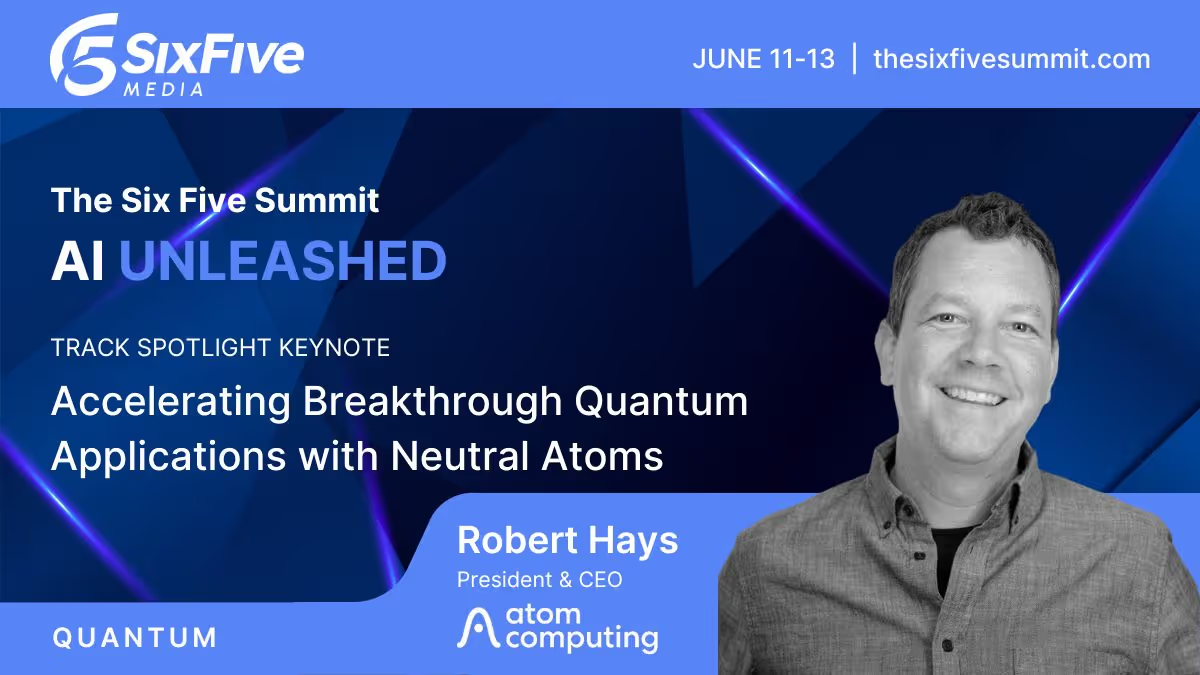
Accelerating Breakthrough Quantum Applications with Neutral Atoms
Our planet needs major breakthroughs for a more sustainable future and quantum computing promises to provide a path to new solutions in a variety of industry segments. This talk will explore what it takes for quantum computers to be able to solve these significant computational challenges, and will show that the timeline to addressing valuable applications may be sooner than previously thought.



